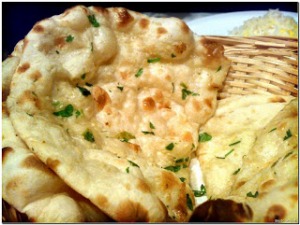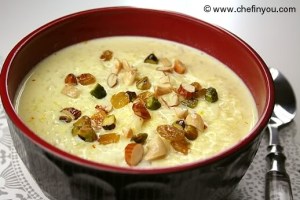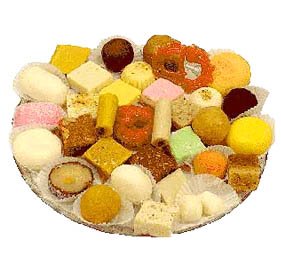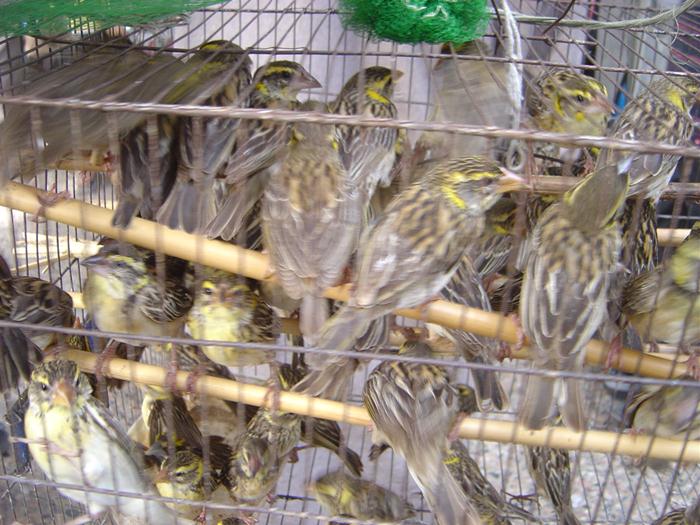How to install the app on iOS
Follow along with the video below to see how to install our site as a web app on your home screen.
Note: This feature may not be available in some browsers.
You are using an out of date browser. It may not display this or other websites correctly.
You should upgrade or use an alternative browser.
You should upgrade or use an alternative browser.
Pakistani Cuisine.
- Thread starter Kinshuk
- Start date
mercurydancer
FULL MEMBER
New Recruit
- Joined
- Dec 17, 2014
- Messages
- 45
- Reaction score
- 1
- Country
- Location
I have never found a decent recipe for naan bread - the huge ones.
ANy really good recipes from you guys?
ANy really good recipes from you guys?
ghazi52
PDF THINK TANK: ANALYST

- Joined
- Mar 21, 2007
- Messages
- 101,758
- Reaction score
- 106
- Country
- Location
Namkeen Gosht
BISMA TIRMIZI
Namkeen Gosht is a meat delight hailing from Khyber Pakhtunkhwa and its adjoining regions; Afghanistan, the tribal belt and Central Asia, where dishes similar to our local Namkeen Gosht are still enjoyed today.
This meat fare is a favourite amongst the mountain people, where the consumption of meat is a way of combating the rigorous terrain of the region; staying strong and warm. Its tender melt in the mouth texture, because of its slow cooking and minimum use of ingredients makes it an all-time favourite amongst meat lovers.

What makes Namkeen Gosht such a hit?
Salt, ginger and pepper are the main ingredients, hence the flavour and tender bite of the meat, generally cooked after being freshly slaughtered, is not lost in a multitude of spices and vegetables, maintaining its subtle flavour.
In the city of Peshawar, and its surrounding areas, meat is king at meal times. Historically speaking, lamb and goat meat (mutton) has always been the favoured meat of South Asia, Middle East, Central Asia, and the Mediterranean.

Maybe it was the availability or size that made it an animal of choice to be hunted as a quick and easy dinner, or the fact that goat or lamb meat is extremely tender and juicy.
'At a garden party at Khyber in the 1920s, a British civil servant sampled the sort of [goat] kababs Babar would have eaten in the early 16th century. The local Afridis, a warlike nomadic mountain people, had invited the British to watch a display of guns, fireworks, and an exhibition of how they attack in enemy’s position. An old Afridi came up and offered a lump of sheep’s flesh freshly roasted. These had to be pulled off and eaten with fingers.'
It is believed that the ruling Mughal’s hearty appetite for beef, lamb and goat clashed with the dietary habits of many of their subjects in the subcontinent. But the mountain people of Khyber were used to the hearty meat-based diet of the nomadic shepherds of the region. The warrior nature of the Pukhtuns, Mongols (the ancestors of the Mughals) and others in the mountainous region encouraged consumption of the undomesticated animal, and vegetarianism was considered the diet of the people of the plains.
Food historian Lizzie Collingham says:
'The consumption of meat was associated with strength and valour. It was considered that environmental essences contained in the soil were transferred from plants and then into herbivores, which in turn were eaten by carnivores. Each transference created a more powerful distillation of essences. Meat was thus the most intense of foods.'

How did the traditional Namkeen Gosht come to be?
My research pointed me to the land of the Pukhtuns. The dish is believed to be the ancestor of the karahi gosht, since tomato and green chillie are not indigenous to the region, but black pepper has been indigenous to southern India for thousands of years and travelled to the mountains of the Pukhtuns; with conquerors, explorers and travelers making it the spice of choice inNamkeen Gosht. From the north, the delicious Namkeen Gosht travelled to the Punjab, where the people of the plains started adding green chillies to it.

Namkeen Gosht is a deliciously rustic meat dish. Traditionally, small cubes of lamb or goat are cooked in ginger, salt, black pepper and/or green chillie, and preferably animal fat. The fresh meat provides the fat base for cooking, and it is most sumptuous when served with a side of hot naan and chopped onions.
My two favourites every Eid-ul-Azha were the Namkeen Gosht my mother made and the special karahi gosht made by my father. Oddly enough, I never asked Ammi for the recipe of Namkeen Gosht, but instead got it from my friend Noreen, who recently made the same for a ladies lunch. My first bite transported me 30 years back in time. Here is the recipe, from my kitchen to yours:
Ingredients
2 lbs goat leg, cut in small cubes
1 ½ to 2 tbsp. freshly chopped ginger
½ to 1 freshly diced tomato
4 to 5 green chillies slit lengthwise, (optional, but preferable, this gives it a real kick)
Salt to taste
Oil ¼ to ½ cup, but with freshly slaughtered meat the animal fat should suffice

Method
Heat oil in heavy-lidded wok. Fry green chillies and ginger for a minute, adding meat, salt, tomato and black pepper, stir on high heat for a few minutes until the heat causes the meat to release its juice.
Seal pot with lid and simmer on low to medium heat for a few minutes, turning the heat to low and cooking until meat is tender and falling off the bone.
The meat juices gradually steam and evaporate, sealing in the juices, and slow cooking to perfection. Avoid adding water if possible, but if need arises, add a little to complete the cooking process.
Serve with naan, lemon wedges and sliced onions.

BISMA TIRMIZI
Namkeen Gosht is a meat delight hailing from Khyber Pakhtunkhwa and its adjoining regions; Afghanistan, the tribal belt and Central Asia, where dishes similar to our local Namkeen Gosht are still enjoyed today.
This meat fare is a favourite amongst the mountain people, where the consumption of meat is a way of combating the rigorous terrain of the region; staying strong and warm. Its tender melt in the mouth texture, because of its slow cooking and minimum use of ingredients makes it an all-time favourite amongst meat lovers.

What makes Namkeen Gosht such a hit?
Salt, ginger and pepper are the main ingredients, hence the flavour and tender bite of the meat, generally cooked after being freshly slaughtered, is not lost in a multitude of spices and vegetables, maintaining its subtle flavour.
In the city of Peshawar, and its surrounding areas, meat is king at meal times. Historically speaking, lamb and goat meat (mutton) has always been the favoured meat of South Asia, Middle East, Central Asia, and the Mediterranean.

Maybe it was the availability or size that made it an animal of choice to be hunted as a quick and easy dinner, or the fact that goat or lamb meat is extremely tender and juicy.
'At a garden party at Khyber in the 1920s, a British civil servant sampled the sort of [goat] kababs Babar would have eaten in the early 16th century. The local Afridis, a warlike nomadic mountain people, had invited the British to watch a display of guns, fireworks, and an exhibition of how they attack in enemy’s position. An old Afridi came up and offered a lump of sheep’s flesh freshly roasted. These had to be pulled off and eaten with fingers.'
It is believed that the ruling Mughal’s hearty appetite for beef, lamb and goat clashed with the dietary habits of many of their subjects in the subcontinent. But the mountain people of Khyber were used to the hearty meat-based diet of the nomadic shepherds of the region. The warrior nature of the Pukhtuns, Mongols (the ancestors of the Mughals) and others in the mountainous region encouraged consumption of the undomesticated animal, and vegetarianism was considered the diet of the people of the plains.
Food historian Lizzie Collingham says:
'The consumption of meat was associated with strength and valour. It was considered that environmental essences contained in the soil were transferred from plants and then into herbivores, which in turn were eaten by carnivores. Each transference created a more powerful distillation of essences. Meat was thus the most intense of foods.'

How did the traditional Namkeen Gosht come to be?
My research pointed me to the land of the Pukhtuns. The dish is believed to be the ancestor of the karahi gosht, since tomato and green chillie are not indigenous to the region, but black pepper has been indigenous to southern India for thousands of years and travelled to the mountains of the Pukhtuns; with conquerors, explorers and travelers making it the spice of choice inNamkeen Gosht. From the north, the delicious Namkeen Gosht travelled to the Punjab, where the people of the plains started adding green chillies to it.

Namkeen Gosht is a deliciously rustic meat dish. Traditionally, small cubes of lamb or goat are cooked in ginger, salt, black pepper and/or green chillie, and preferably animal fat. The fresh meat provides the fat base for cooking, and it is most sumptuous when served with a side of hot naan and chopped onions.
My two favourites every Eid-ul-Azha were the Namkeen Gosht my mother made and the special karahi gosht made by my father. Oddly enough, I never asked Ammi for the recipe of Namkeen Gosht, but instead got it from my friend Noreen, who recently made the same for a ladies lunch. My first bite transported me 30 years back in time. Here is the recipe, from my kitchen to yours:
Ingredients
2 lbs goat leg, cut in small cubes
1 ½ to 2 tbsp. freshly chopped ginger
½ to 1 freshly diced tomato
4 to 5 green chillies slit lengthwise, (optional, but preferable, this gives it a real kick)
Salt to taste
Oil ¼ to ½ cup, but with freshly slaughtered meat the animal fat should suffice

Method
Heat oil in heavy-lidded wok. Fry green chillies and ginger for a minute, adding meat, salt, tomato and black pepper, stir on high heat for a few minutes until the heat causes the meat to release its juice.
Seal pot with lid and simmer on low to medium heat for a few minutes, turning the heat to low and cooking until meat is tender and falling off the bone.
The meat juices gradually steam and evaporate, sealing in the juices, and slow cooking to perfection. Avoid adding water if possible, but if need arises, add a little to complete the cooking process.
Serve with naan, lemon wedges and sliced onions.

ghazi52
PDF THINK TANK: ANALYST

- Joined
- Mar 21, 2007
- Messages
- 101,758
- Reaction score
- 106
- Country
- Location
.......................... .. ..
.
Best Punjabi Lunch; Sarsoun Ka Saag, Makkai Ki Roti and Achaar

.................................
The perfect naan bread

Felicity Cloake’s perfect naan bread. Photograph: Felicity Cloake/Guardian
(Makes 6-8)
1.5 tsp fast-action yeast
1 tsp sugar
150ml warm water
300g strong white bread flour, plus extra to dust
1 tsp salt
5 tbsp natural yoghurt
2 tbsp melted ghee or butter, plus extra to brush
A little vegetable oil, to grease
1 tsp nigella (black onion), sesame or poppy seeds (optional)
Put the yeast, sugar and two tablespoons of warm water in a bowl and stir well. Leave until it begins to froth.
Put the flour and salt into a large mixing bowl and whisk to combine. Stir the yoghurt into the yeast mixture, then make a well in the middle of the flour and pour it in, plus the melted ghee. Mix, then gradually stir in the water to make a soft, sticky mixture that is just firm enough to call a dough, but not at all dry. Tip out on a lightly floured surface and knead for about five minutes until smooth and a little less sticky, then put in a large, lightly oiled bowl and turn to coat. Cover and leave in a draught-free place (the airing cupboard, or an unlit oven) until doubled in size: roughly 90–120 minutes.
Tip the dough back out on to the lightly floured surface and knock the air out, then divide into eight balls (or six if you have a particularly large frying pan). Meanwhile, heat a non-stick frying pan over a very high heat for five minutes and put the oven on low. Prepare the melted ghee and any seeds to garnish.
Flatten one of the balls and prod or roll it into a flat circle, slightly thicker around the edge. Pick it up by the top to stretch it slightly into a teardrop shape, then put it in the hot pan. When it starts to bubble, turn it over and cook until the other side is browned in patches. Turn it back over and cook until there are no doughy bits remaining.
Brush with melted ghee and sprinkle with seeds, if using, and put in the oven to keep warm while you make the other breads.
Naan breads: worth making at home without a tandoor, or are you better off buying them to go with your homemade curries? Do you prefer a chapati or a paratha? And does anyone have a good recipe for a classic stuffed naan: keema, peshwari or even something a little more unusual?

.
Best Punjabi Lunch; Sarsoun Ka Saag, Makkai Ki Roti and Achaar

.................................
...............I have never found a decent recipe for naan bread - the huge ones.
ANy really good recipes from you guys?
The perfect naan bread

Felicity Cloake’s perfect naan bread. Photograph: Felicity Cloake/Guardian
(Makes 6-8)
1.5 tsp fast-action yeast
1 tsp sugar
150ml warm water
300g strong white bread flour, plus extra to dust
1 tsp salt
5 tbsp natural yoghurt
2 tbsp melted ghee or butter, plus extra to brush
A little vegetable oil, to grease
1 tsp nigella (black onion), sesame or poppy seeds (optional)
Put the yeast, sugar and two tablespoons of warm water in a bowl and stir well. Leave until it begins to froth.
Put the flour and salt into a large mixing bowl and whisk to combine. Stir the yoghurt into the yeast mixture, then make a well in the middle of the flour and pour it in, plus the melted ghee. Mix, then gradually stir in the water to make a soft, sticky mixture that is just firm enough to call a dough, but not at all dry. Tip out on a lightly floured surface and knead for about five minutes until smooth and a little less sticky, then put in a large, lightly oiled bowl and turn to coat. Cover and leave in a draught-free place (the airing cupboard, or an unlit oven) until doubled in size: roughly 90–120 minutes.
Tip the dough back out on to the lightly floured surface and knock the air out, then divide into eight balls (or six if you have a particularly large frying pan). Meanwhile, heat a non-stick frying pan over a very high heat for five minutes and put the oven on low. Prepare the melted ghee and any seeds to garnish.
Flatten one of the balls and prod or roll it into a flat circle, slightly thicker around the edge. Pick it up by the top to stretch it slightly into a teardrop shape, then put it in the hot pan. When it starts to bubble, turn it over and cook until the other side is browned in patches. Turn it back over and cook until there are no doughy bits remaining.
Brush with melted ghee and sprinkle with seeds, if using, and put in the oven to keep warm while you make the other breads.
Naan breads: worth making at home without a tandoor, or are you better off buying them to go with your homemade curries? Do you prefer a chapati or a paratha? And does anyone have a good recipe for a classic stuffed naan: keema, peshwari or even something a little more unusual?

mercurydancer
FULL MEMBER
New Recruit
- Joined
- Dec 17, 2014
- Messages
- 45
- Reaction score
- 1
- Country
- Location
I tried that recipe for naan. It works perfectly. Quiet the best recipe for naan that I have ever come across.
ghazi52
PDF THINK TANK: ANALYST

- Joined
- Mar 21, 2007
- Messages
- 101,758
- Reaction score
- 106
- Country
- Location
I tried that recipe for naan. It works perfectly. Quiet the best recipe for naan that I have ever come across.
Thank me......................

ghazi52
PDF THINK TANK: ANALYST

- Joined
- Mar 21, 2007
- Messages
- 101,758
- Reaction score
- 106
- Country
- Location
Pakistani cuisine is very rich with flavors and spices. Because of the shared history, it resembles quite much to Indian food. Here, some famous foods and beverages of Pakistan are listed:
i: Tandoori Naan (Garlic naan, mint naan, plain butter naan):


ii: Paratha (Oily bread):

iii: Poori (Thin fluffy bread):

2. Main dishes / entrée :
i: Biryani:

ii: Pulao:

iii: Qorma:

iv: Chicken / mutton/ beef Karahi:

- Breads
- Entree
- Bar-b-Que
- Deserts
- Beverages
i: Tandoori Naan (Garlic naan, mint naan, plain butter naan):


ii: Paratha (Oily bread):

iii: Poori (Thin fluffy bread):

2. Main dishes / entrée :
i: Biryani:

ii: Pulao:

iii: Qorma:

iv: Chicken / mutton/ beef Karahi:

ghazi52
PDF THINK TANK: ANALYST

- Joined
- Mar 21, 2007
- Messages
- 101,758
- Reaction score
- 106
- Country
- Location
Palwasha Furqan
FULL MEMBER
New Recruit
- Joined
- Jun 20, 2015
- Messages
- 10
- Reaction score
- 0
- Country
- Location
after see all these pictures .. Roza lag gya
Waseem.Khan
FULL MEMBER
New Recruit
- Joined
- Jun 16, 2015
- Messages
- 37
- Reaction score
- 0
- Country
- Location
Biryaniii for sure
Ragnar
FULL MEMBER

- Joined
- Sep 1, 2014
- Messages
- 1,300
- Reaction score
- -5
- Country
- Location
This looks similar to Kerala Parotta (or Porotta). Is it made similarly?
Palwasha Furqan
FULL MEMBER
New Recruit
- Joined
- Jun 20, 2015
- Messages
- 10
- Reaction score
- 0
- Country
- Location
Yummy!
Similar threads
- Replies
- 98
- Views
- 8K
- Replies
- 3
- Views
- 335
- Replies
- 2
- Views
- 737
- Replies
- 0
- Views
- 182
- Replies
- 7
- Views
- 580

















